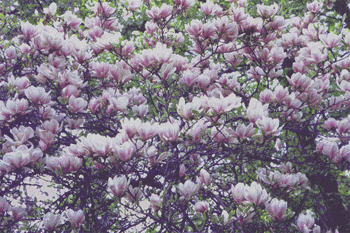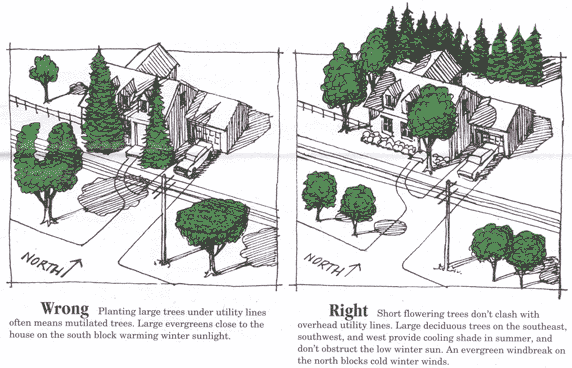The Benefits of Trees
A well managed urban forest contributes to a sense of community pride and ownership. Without trees, the city is a sterile landscape of concrete, brick, steel and asphalt. Picture your town without trees. Would it be a place where you would like to live? Trees make communities livable for people. Trees add beauty and create an environment beneficial to our mental health. They add natural character to our cities and towns, and provide us with colors, flowers and beautiful shapes, forms, and textures. They absorb and block noise from the urban environment; they screen harsh scenery, and soften the outline of masonry, metal and glass.

Trees do more!
Trees do much more than add physical value to a community. Trees have also been shown to elevate peoples' senses of physical well-being. They impact deeply on our moods and emotions, providing psychological benefits impossible to measure. A healthy forest growing in places where people live and work is an essential element of the health of the people themselves. Trees can create feelings of relaxation and well-being, and provide privacy and a sense of solitude and security.
Trees Save Energy
Strategically placed trees can be as effective as other energy saving home improvements, such as insulation and the installation of weather-tight windows and doors. Trees can help reduce your heating and cooling costs. They save energy through cooling in the hotter months, and they provide a windbreak during winter. This results in using less electricity or natural gas for cooling and heating. Strategically placed shade trees a minimum of three large trees around your home can reduce air conditioning costs up to 30 percent. Deciduous trees provide shade and block heat from the sun during hotter months, and by dropping their leaves in the fall they admit sunlight in the colder months. Use evergreens as windbreaks to save from 10 to 50 percent in energy used for heating. Evergreens offer their best benefits when you place them to intercept and slow winter winds, usually on the west side of your home in the Coeur d'Alene area. Do not plant them on the south side of your home, because they block warming sunlight during winter. These trees also provide some shading benefits during summer.
Trees Modify Local Climate
Trees can help cool the "heat island" effect in our cities. These islands result from storage of thermal energy in concrete, steel, and asphalt. Heat islands are 3 to 10 degrees warmer than the surrounding countryside. The collective effect of a large area of transpiring trees (evaporating water) reduces the air temperature in these areas. Trees lower air temperature through shade, and increase humidity in dry climates through evaporation of moisture.
Trees Reduce Air Pollution
Trees absorb CO2 and other dangerous gases and, in turn, replenish the atmosphere with oxygen. Trees and other plants make their own food from carbon dioxide (CO2) in the atmosphere, water, sunlight and a small amount of soil elements. In the process, they release oxygen (O2) for us to breathe. Trees help to settle out, trap and hold particulate pollutants (dust, ash, pollen and smoke) that can damage human lungs.
Trees Conserve Water and Reduce Soil Erosion
Trees create organic matter on the soil surface from their leaf litter, and their roots increase soil permeability. This results in reduced surface runoff of water from storms, and increased ground water recharge that is significantly reduced by paving. Tree roots also reduce soil erosion from wind. Without trees, cities would need to increase sewage and storm water drainage channels and waste-treatment capabilities to handle increased water runoff.
Trees Increase Economic Stability
The scope and condition of a community's trees and, collectively, its urban forest, is usually the first impression a community projects to its visitors. Studies have shown that trees enhance community economic stability by attracting businesses and tourists. People linger and shop longer along tree-lined streets. Apartments and offices in wooded areas rent more quickly, have higher occupancy rates and tenants stay longer. Businesses leasing office space in wooded developments find their workers are more productive and absenteeism is reduced. A community's urban forest is an extension of its pride and community spirit.
Trees Create Wildlife and Plant Diversity
Trees and associated plants create local ecosystems that provide habitat and food for birds and animals. They offer suitable mini-climates for other plants that would otherwise be absent from urban areas. Biodiversity is an important part of urban forestry.
Trees Increase Property Values
We all know that property that is well landscaped with trees and other plants is more desirable than property sitting on a barren landscape. Real estate experts call this "curb appeal". Studies have shown that healthy trees can add up to 20 percent to residential property value. Office and industrial space in a wooded setting is in more demand and is more valuable to sell or rent.
Trees add value in so many ways to a community. Each individual tree in an urban forest has its own value. In fact, an urban tree is rarely considered for the value of its wood and is appraised more like real estate than a commodity. The dollar value of an urban street tree in good condition can be 25 times the stumpage value of its country cousin. For more information on finding the value of individual trees, see the website of the International Society of Arboriculture.
Trees on public property belong to all of us. Proper management of this valuable resource is known as urban and community forestry.








